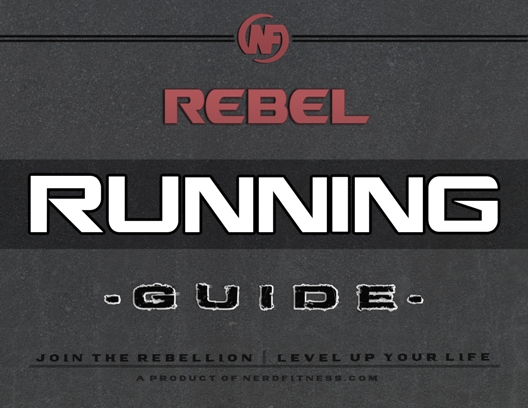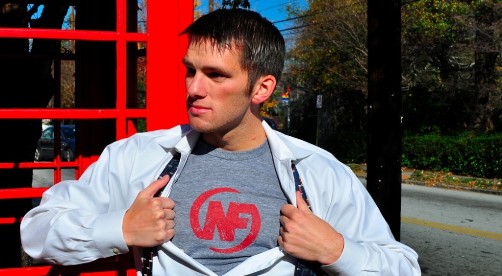Note: The Rebel Running Guide is no longer available. If you’re a beginner runner, I recommend the SR Boot Camp.
Next Monday, the Rebel Running Guide officially launches. We have been getting down to business and putting some great stuff together for you – just a few more days!

Here’s a sneak peak of what you can expect.
There will be six books to the guide:
- Rebel Running Guide
- Rebel Running Diet
- Rebel Running Workouts
- Rebel Race Domination
- Rebel Adventure Racing
- Premium Bonuses (this surprise you’ll have to wait for 🙂
Part of the first book is a section on five major running myths that are popular with beginner runners. I’m going to share three of them with you today.
I read through the first book (the Rebel Running Guide) and it’s nearly 16,000 words. It took me over an hour to read! What’s below is a tiny preview.
Without further adieu, here is part of the Rebel Running Guide!
Running Myth #1: Running damages your knees
This is completely untrue and actually, the opposite is true. Running helps accustom the knee joint to bearing heavy loads and can even protect the knee from future injuries. Don’t take my word on it; read it in this study and this one.
To help prevent knee injuries, follow the workouts in the Workout Book and pay extra attention to the strength and flexibility exercises. When your joints are used to carry extra weight, they’ll be far less likely to get injured from running.
Another big prevention measure is to try to be as close to your goal weight as possible. Carrying extra weight can increase your chances of a knee injury (along with a host of other running-related injuries), so losing any extra weight should be your first priority.
Running Myth #2: Runners don’t need strength training
Perhaps one hundred years ago when almost everyone performed manual labor all day this myth would be accurate. But in a world where people are sedentary for far too long every day, strength training is vital to correct imbalances and strengthen your muscles, bones, and connective tissues for the impact stresses of running.
Strength exercises improve your durability and allow you to run longer and faster. They’re your insurance against overuse injuries that stem from weaknesses.
An analogy that I always turn to is that of a car: You can’t put a Ferrari engine in a Geo Prizm. If you do, it’ll tear the car chassis to pieces.
Here we have your heart, lungs, and aerobic system (your “endurance” or ability to run longer) much more developed than your muscles, ligaments, tendons, and bones. If your infrastructure can’t handle the easy running that your heart and lungs are dishing out, you’ll have a running injury in no time. Strength training corrects this imbalance.
It not only helps you prevent injury, but it can increase your endurance. Numerous studies show that heavy weight lifting can help you run longer and faster before fatigue sets in. Strength training improves your brain’s ability to recruit more of your leg muscles while running. And when you can use more of your muscle, you’re going to run more efficiently and get tired later. It’s a win-win!
Running Myth #3: You have to carbo load for every run
Eating an inordinate amount of carbohydrates seems like a rite of passage for every runner. The truth is, you don’t need as many as you think.
Sure, carbs have their place in any endurance sport. You definitely need more than a sedentary person or someone who’s a weight lifter. They’re especially important during three key runs: a fast workout, a long run, and a race.
During these three types of runs you should monitor your carbohydrate intake and eat more than usual. I highly recommend Loren Cardain and Joe Friel’s book The Paleo Diet for Athetes (affiliate link) which will give you the background on how to alter a paleo diet when you’re training for an endurance sport.
Read the Rebel Running Diet for advice on how to eat carbs strategically so they won’t cause you to gain weight or give you any negative health consequences. There’s a time and a place for carbs and we’ll show you how to do it right.
##
This teaser section is longer in the guide than presented here. There’s no fun in giving everything away 🙂
Keep in mind that the text may be slightly different in the full version. As we’re editing, we’re always making things better and adding new content.
As many of you know, I partnered with Steve Kamb (the superhero-esque guy below) to write this book. He’s the mastermind behind Nerd Fitness, knows his stuff about getting in shape, and is a great listener.

Next Monday, we’ll announce the RRG – plus the contest that goes along with it! Everybody likes to win free stuff right?
EDIT: Since this program is no longer available, you can get a fully custom training schedule if that’s what you’re looking for!